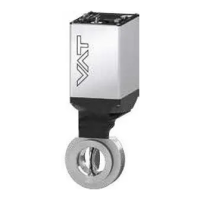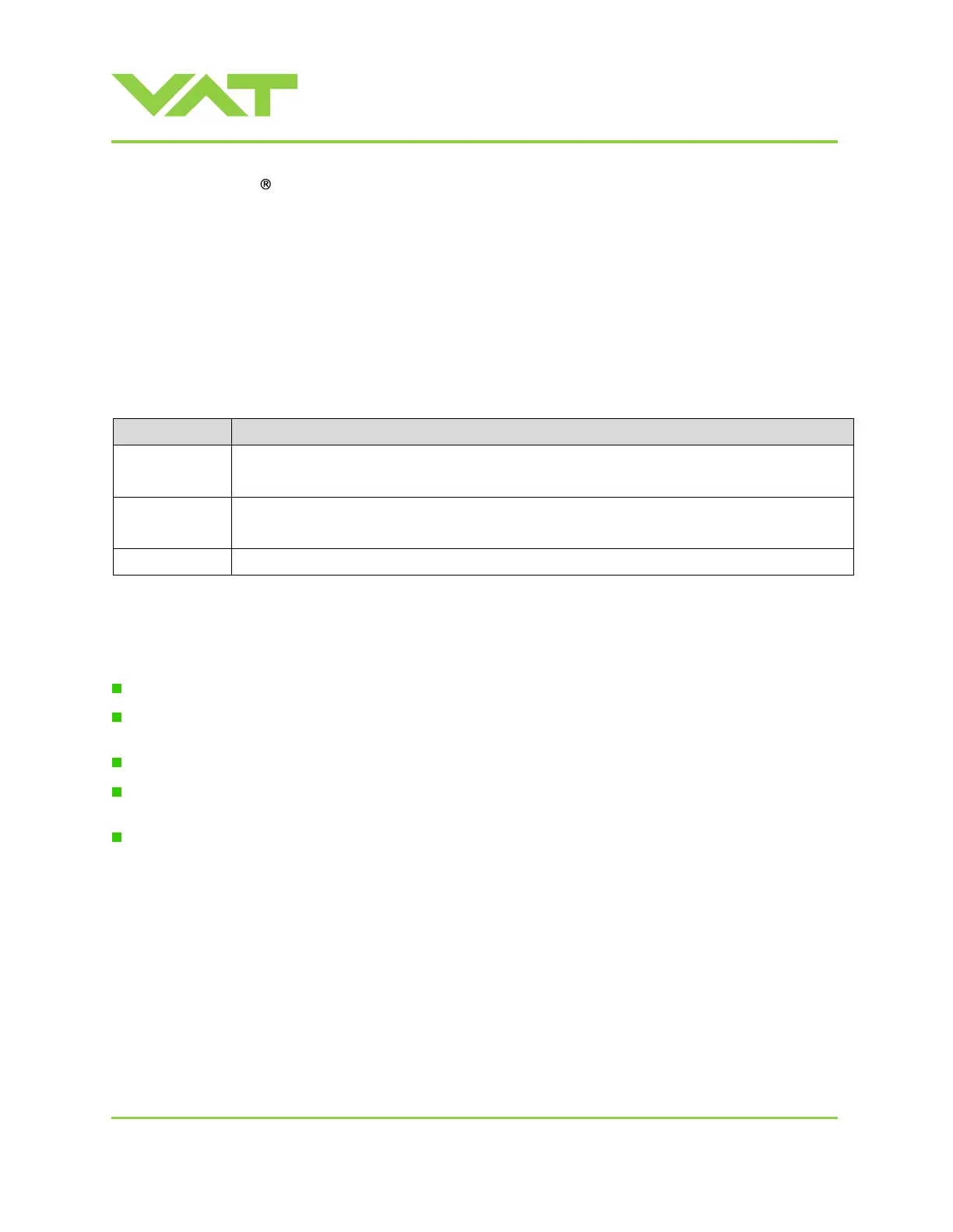Installation, Operating & Maintenance Instructions
Series 615 DN 40 (I.D. 1½”), DeviceNet
VAT Vakuumventile AG, CH-9469 Haag, Switzerland
Tel +41 81 771 61 61 Fax +41 81 771 48 30 CH@vatvalve.com www.vatvalve.com
4 DeviceNet interface
4.1 Introduction
Note:
When operating the valve with a DeviceNet™ Digital Interface, use this manual in conjunction with the ODVA DeviceNet
Specification, Volume I [1] and Volume II [2], and the SEMI® Standards Common Device Model [3].
A complete listing of the documents that are referenced throughout this manual are listed in Table 1 below.
Refer to these documents to obtain a complete functional description of your instrument.
References:
The documents listed in Table below, those are referenced throughout this manual.
“DeviceNet Specification, Volume I: DeviceNet Communication Model and Protocol”,
Open DeviceNet Vendors Association, Inc. Release 2.0, errata 5.
“DeviceNet Specification, Volume II: DeviceNet Profiles and Object Library”,
OpenDeviceNet Vendors Association, Inc. Release 2.0, errata 5.
“Sensor/Actuator Network Common Device Model”, SEMI Standards Document E54-0997.
The following Object Modeling related terms are used when describing CIP (Common Industrial Protocol) services and
protocol:
Object – An abstract representation of a particular component within a product.
Class ID – A set of objects that all represent the same kind of system component. A class is a generalization of an
object. All objects in a class are identical in form and behavior, butmay contain different attribute values.
Service Code – Defines if the command is a write, read or reset command
Instance ID – A specific and real (physical) occurrence of an object. For example: New Zealand is an instance of
the object class Country. The terms Object, Instance, and Object Instance all refer to a specific Instance.
Attribute ID – An integer identification value assigned by ODVA to an instance; this integer is unique within the
object and MAC ID in which it resides

